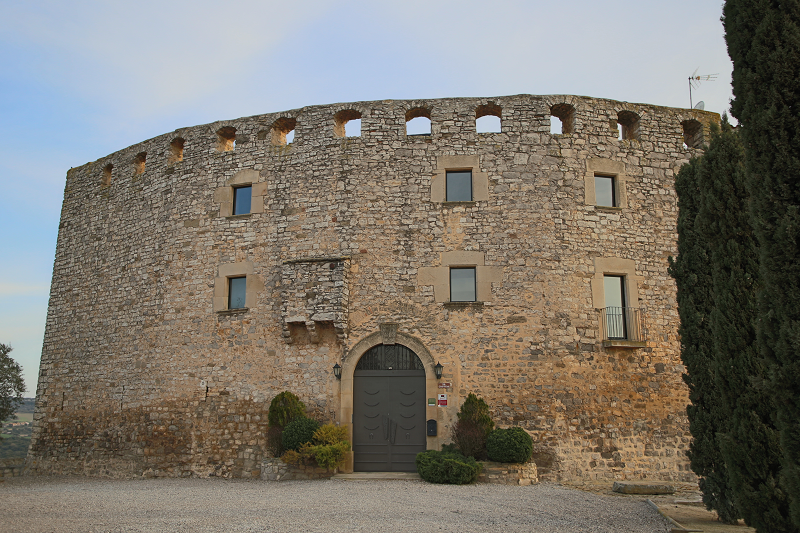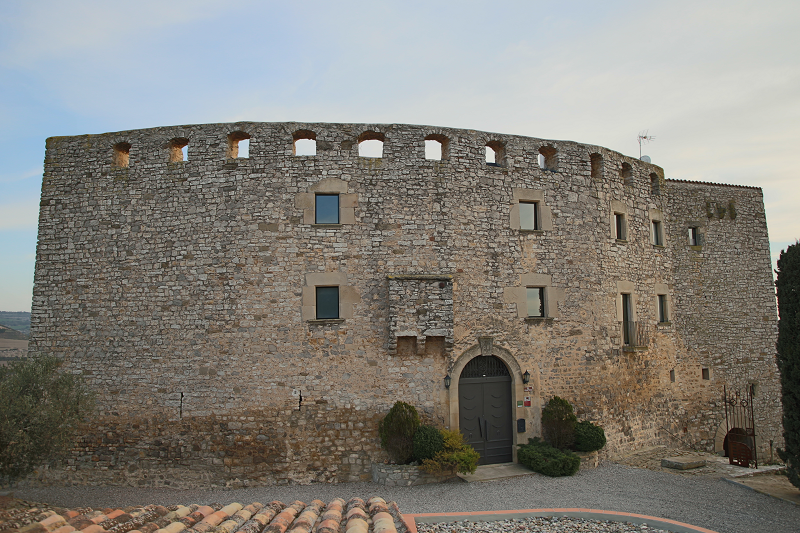Fonolleres castle (cat. Castell de Fonolleres) is located in the highest part of Fonolleres, in the municipality of Granyanella (Segarra), Lleida province, Catalonia, Spain, declared a cultural asset of national interest.
When it comes to its structure, it has a ground floor, with an interior courtyard which possibly was the place-of-arms, the first and second floors have openings and walls made up of irregular ashlars, except around the doors and windows where they are more accurately worked. On the façade, the main door, with a semicircular arch and a voussoir does not correspond to the rest, due to its structure, according to the information that appears on the key it was reformed in 1903.
At the same level as the front door there is a series of loopholes, as well as the remains of the machicolation located above the main door (decentralized by the subsequent reforms), all these served as defense. The openings located on the first and second floors are from later times and have no decoration. Finally, at the top we see a series of semicircular arch openings, possibly used for watch and defense originally.
On the right side of the main façade there is a quadrangular tower (the old keep tower) with a semicircular arch opening in its lower part and a barrel vault. On the upper part there are remains of an ancient machicolation, and openings made in later centuries, of which the window situated at the back stands out, due to its Renaissance finish with decorated jambs and upper frame.
The town of Fonolleres is located on a hill on the right side of the river Ondara, where the royal road of Lleida to Barcelona used to pass. The castle of Fonolleres, as it was in the case of the neighboring castles, was probably built at the end of the 11th and beginning of the 12th century, due to the need of the count of Barcelona to protect the aforementioned road and guarantee the success of its campaigns against the Saracens.
The first news of the castle is from 1113, when the lordship of Fonolleres belonged to the Cervera. According to Ceferí Rocafort, the territory appears documented in 1118. Two years later, the land of Fonolleres is mentioned as a south border of the land of Canós castle. From this fortress came a family of minor nobles or castellans named Fonolleres.
Thus, in 1147, Pere Bernat de Fonolleres signed a concord with Pere Hug de Sedó regarding the possession of some courts, before the witnesses Berenguer Dalmau de Cervera, Ramon de Montlleó and Mir and Guillem de Curullada.
In 1185 Arnau de Fonolleres was one of the witnesses of a donation from Guillem de Guàrdia to Poblet. Other people also had rights to the terrain, such as Bernat de Granyena, the canon of Solsona, who received the tithes in 1207, or Bernat de Fonolleres, who in 1219 gave to Canonica Solonina all the rights he had ‘in castro et villa de Fenollers’.
From the end of the 13th century until the beginning of the 14th century the feudal owners of the castle were the Satorre, at least until 1427.
In the second half of the 15th century it belonged to the Ivorra and in the 17th century the owner was Joan Pocorull and his descendants, although the criminal jurisdiction belonged to the King. Upon reaching the 19th century it was the Duran I Cerdà who were its lords until the abolition of the jurisdictional lordship.

















